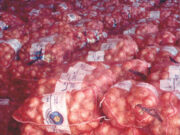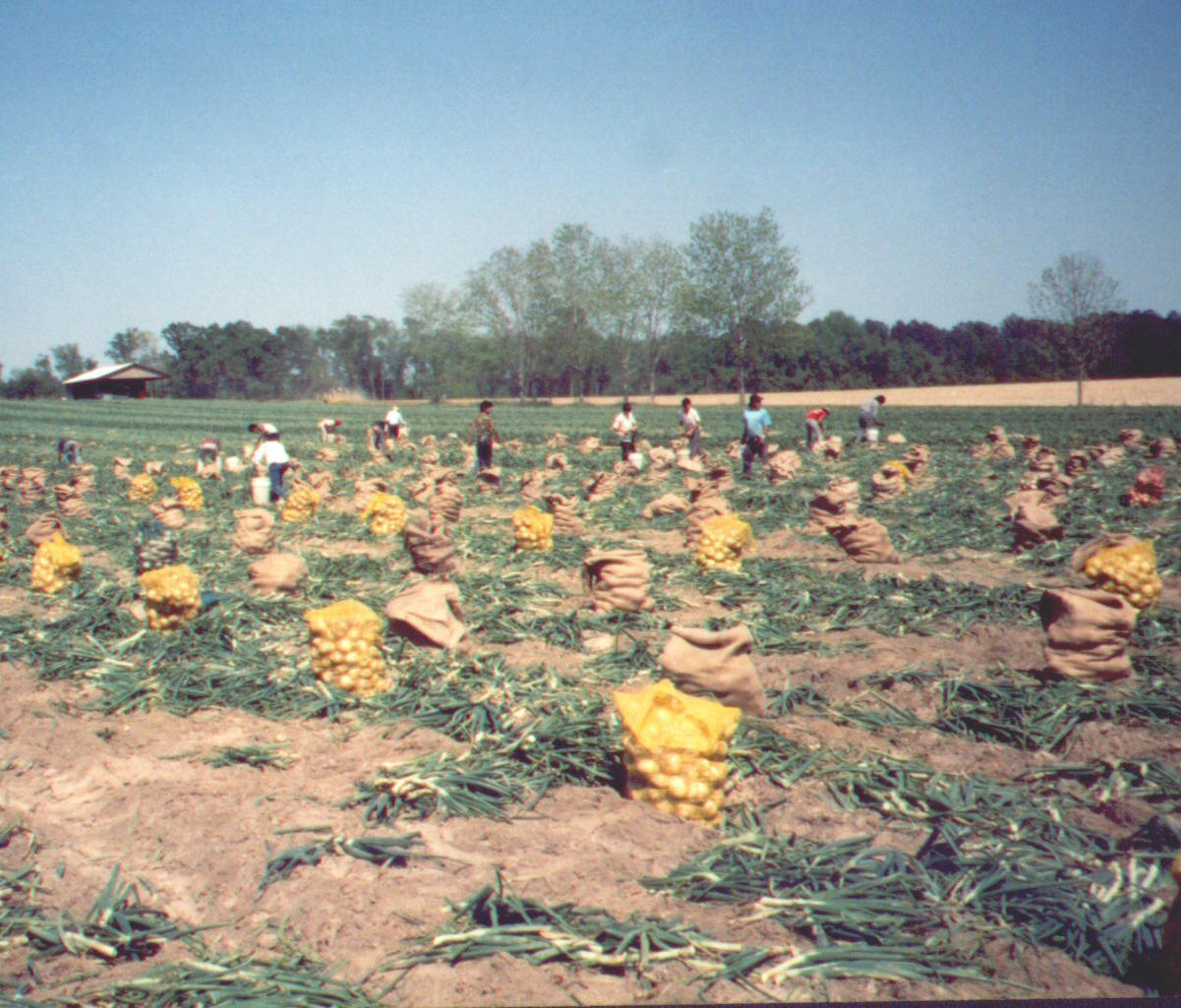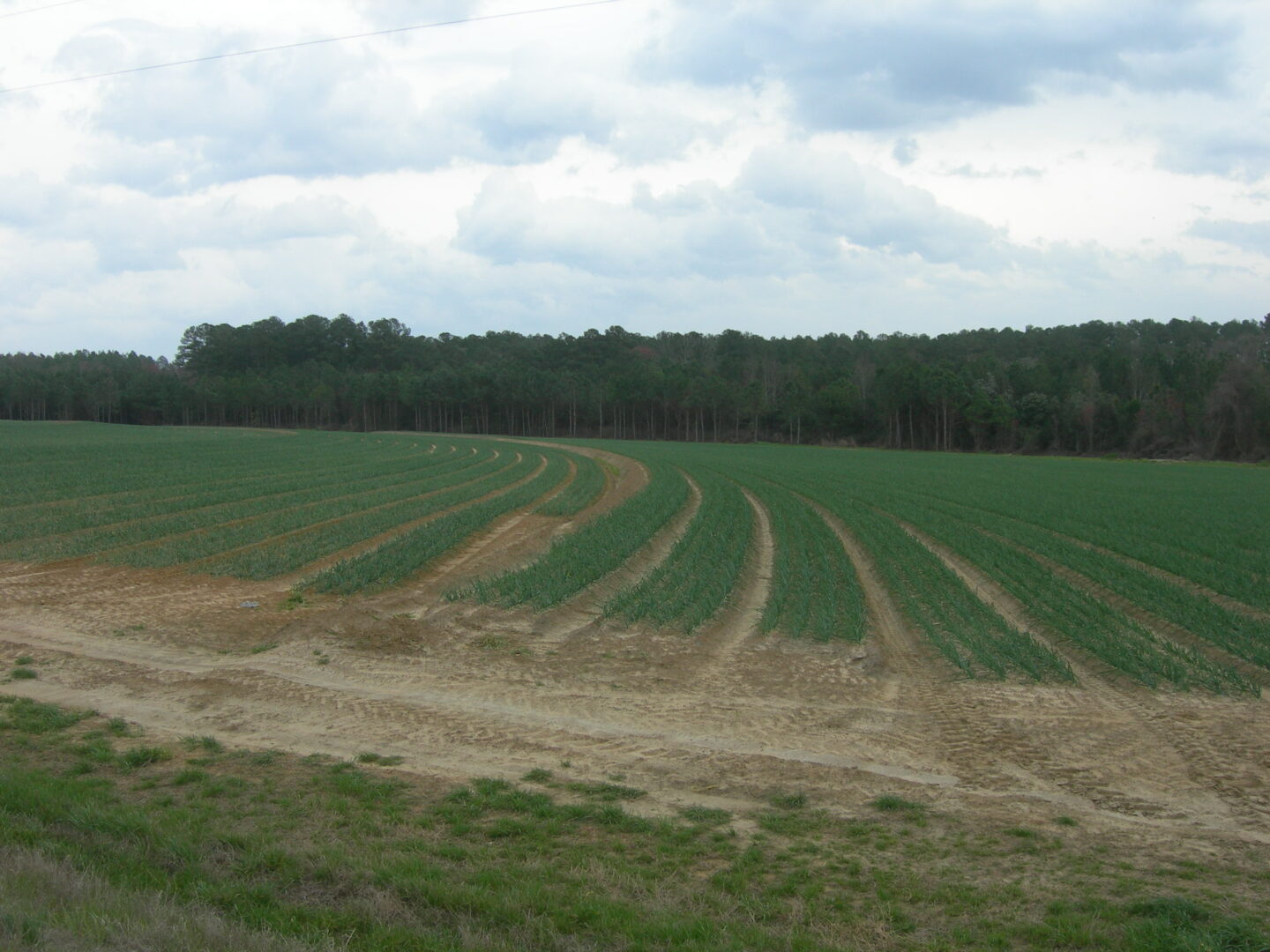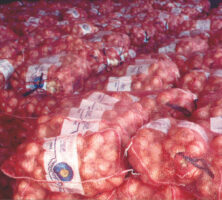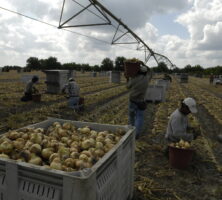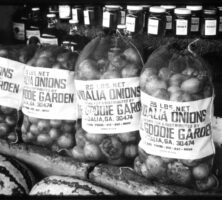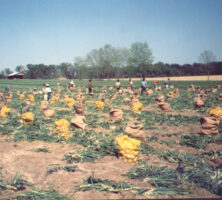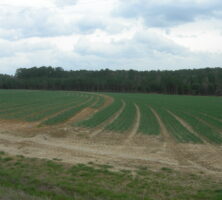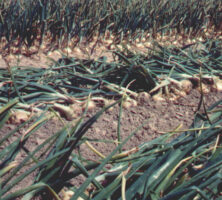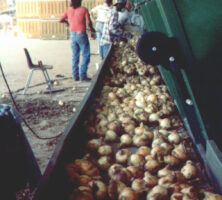The Vidalia sweet onion, declared the official state vegetable in 1990, is perhaps the greatest agricultural success story in Georgia’s history. Mose Coleman, a Toombs County farmer, is believed to have been the first grower of the now popular commodity. In 1931 Coleman discovered that his onions were not hot, but rather mild. He managed to sell his onions for $3.50 per fifty-pound bag, a very good price at the time. Other farmers in the area, who through the Great Depression years had not been able to get a fair price for their produce, thought Coleman had found a gold mine. They soon began to produce onions, too.
Georgia’s Onion Industry
In the 1940s the state of Georgia built a farmers’ market in Vidalia to help the growers sell their produce. Before the construction of the interstate highway system Vidalia was at the crossroads of some of the most important north-south highways. Word spread among travelers about the tasty sweet onions from Vidalia. The Piggly Wiggly supermarket chain also maintained a distribution center in Vidalia and purchased the locally grown onions when they were in season. Vidalia onions began showing up in Piggly Wiggly stores across the region. Acreage grew steadily over the next twenty years, and by the mid-1970s farmers in the area devoted about 600 acres to the onions.
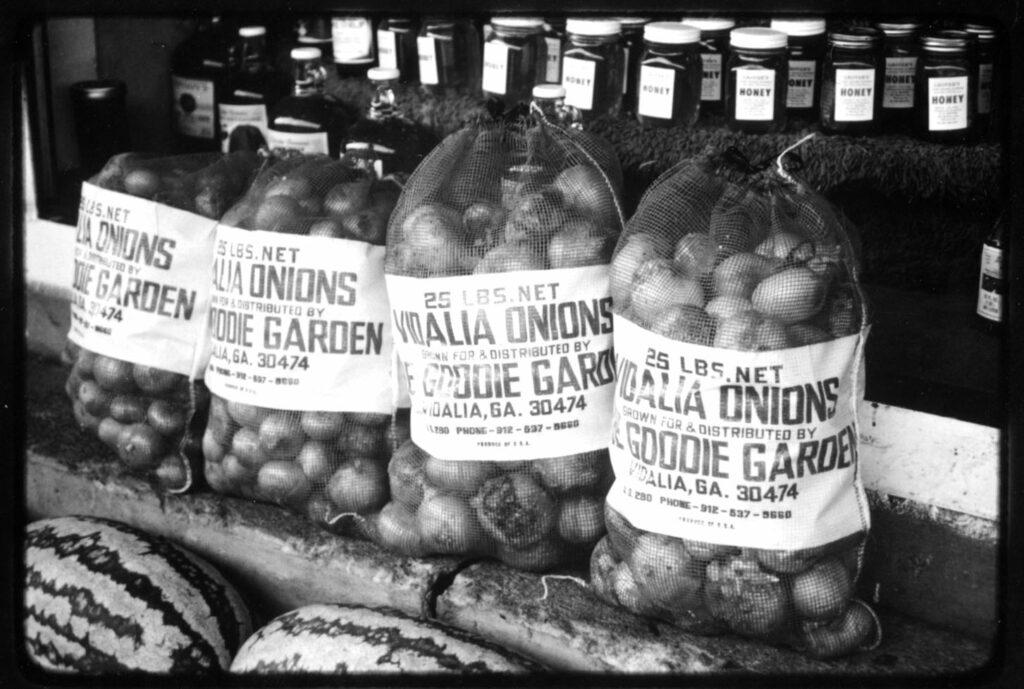
In the 1970s a push was made for Vidalia onions to be marketed nationally, and growers began mounting additional promotional efforts. Their success led to the establishment of the Glennville sweet onion, named after the Tattnall County city situated about thirty-five miles southeast of Vidalia. Onion festivals were, and still are, held in both Glennville and Vidalia each May. In the late 1970s and the early 1980s growers formed marketing groups or cooperatives in an effort to enhance marketing and to prevent bootleggers from selling rebagged onions from other states as Vidalias. In the early 1980s one farmer group advertised that consumers should look for the yellow tag on the bag of the “true” Vidalia sweet onions. Their efforts were reasonably successful and created quite a stir among growers, because some bona fide Vidalia onion farmers were not members of that group. As a result of the continued confusion over what constituted a genuine Vidalia or Glennville sweet onion, growers decided they all needed to work together.
In response to this need for one product and one voice for the state’s fledgling onion industry, local University of Georgia extension agents put together a beltwide seminar in 1985 to discuss the feasibility of such an effort. This was followed by a year-long series of extension meetings in Reidsville, in which U.S. Department of Agriculture, Georgia Department of Agriculture, and University of Georgia personnel were involved. As a result of these meetings the growers identified several goals and made several important agreements. First, they settled on the Vidalia name and agreed to pursue protection of their commodity. The Vidalia Onion Act, passed by the Georgia legislature in 1986, defined the twenty counties in which Vidalia onions could be grown, and the state’s Department of Agriculture was given ownership of the Vidalia name as it applied to onions. A grower referendum for the establishment of an Onion Commodity Commission failed in 1986 but passed in 1987. In 1989 the U.S. Department of Agriculture’s Federal Marketing Order No. 955 gave federal protection to the Vidalia onion and created the Vidalia Onion Committee, which supports both marketing and research initiatives for Vidalia onions. Finally, in 1992 the state of Georgia became the owner of the Vidalia onion trademark.
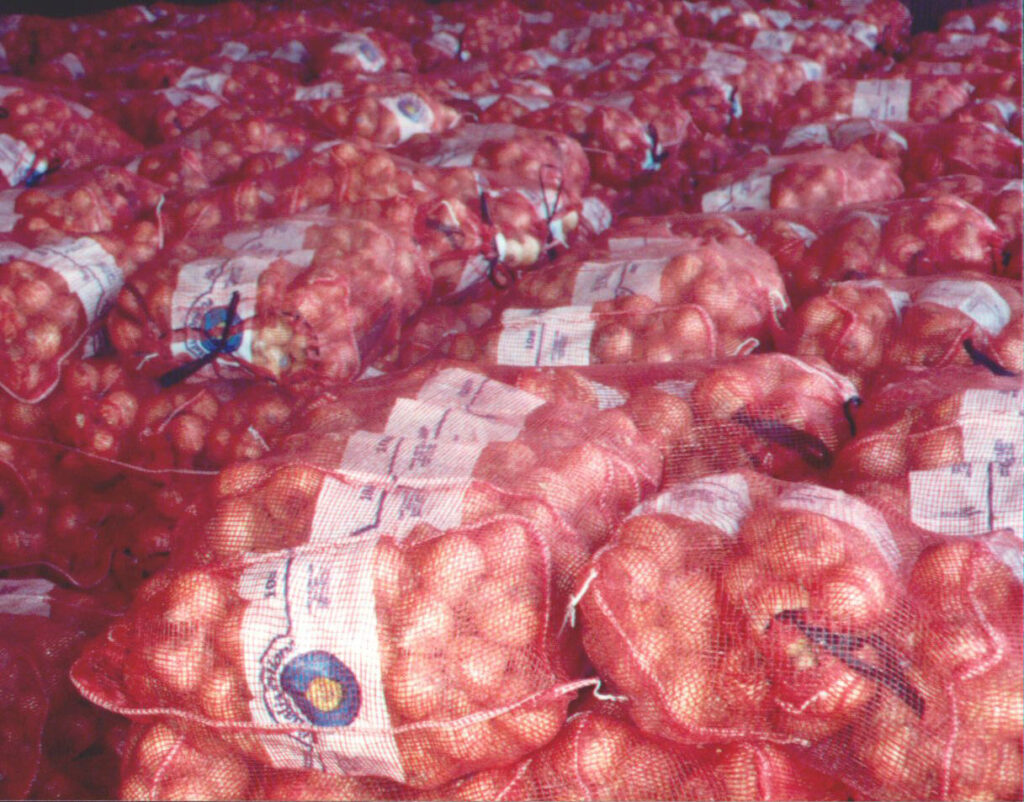
Production
Vidalia onion seed is planted in September at a high density for the production of transplants. It takes about eight weeks to produce a good transplant. The seedlings are pulled by hand, trimmed, and taken to the production field. Equipment is used to peg rows of holes in the soil, and the transplants are placed in each hole by hand. About 80,000 plants per acre is a good average population. To produce the mildest possible product, growers limit the use of sulfur fertilizer on the crop, as sulfur has been found to make these onions more pungent.
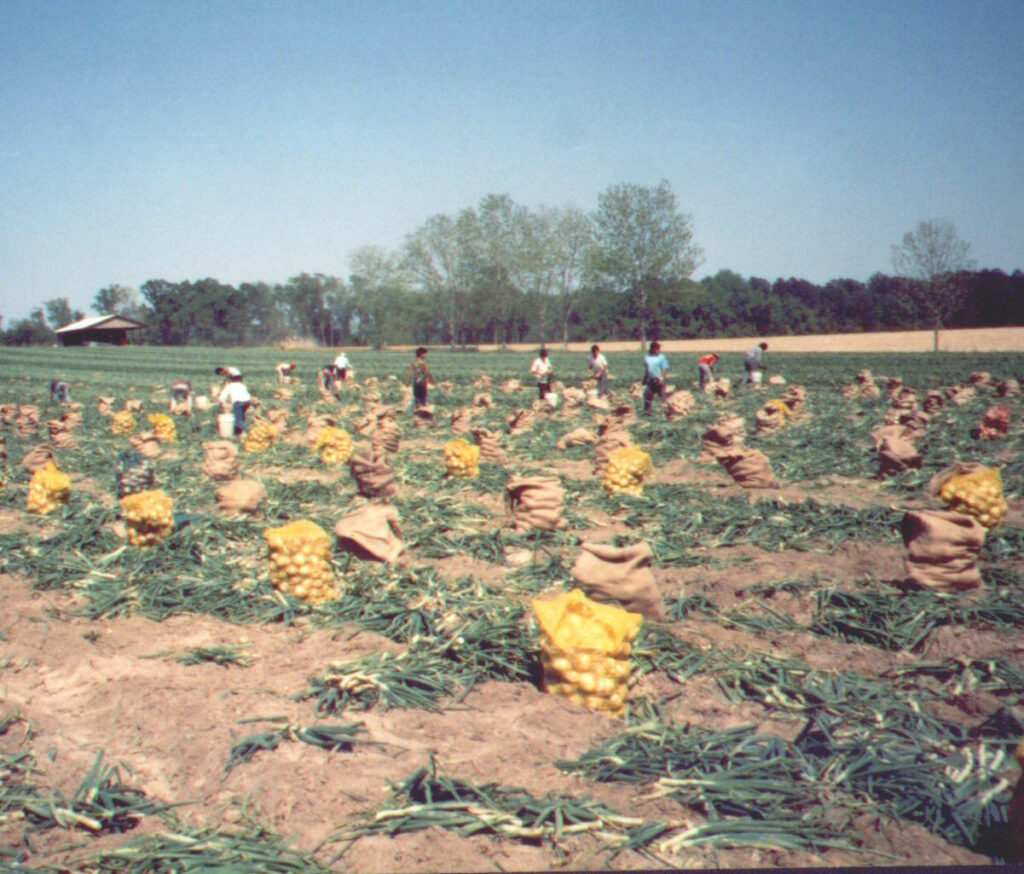
At harvest time, when the necks of the onions get weak and begin to fall over, growers undercut the onions to allow them to dry down. Onions mature from mid-April to mid-June. Most of the acreage is still harvested by hand, but mechanical harvesting is on the rise because of the high costs and extensive regulations involving farm labor. Harvested onions are transported to the packing facility for further drying, grading, and packaging. Onions to be stored are poured into bin boxes and placed in coolers. Controlled atmospheric storage facilities allow onions to be stored for months past the fresh market season, and the adoption of this technology led to a substantial increase in acreage during the mid-1990s.
By 2010 about 12,000 acres were planted annually, with an average annual farmgate value of $150 million. Vidalia onions represent about 40 percent of the total national spring onion production.


